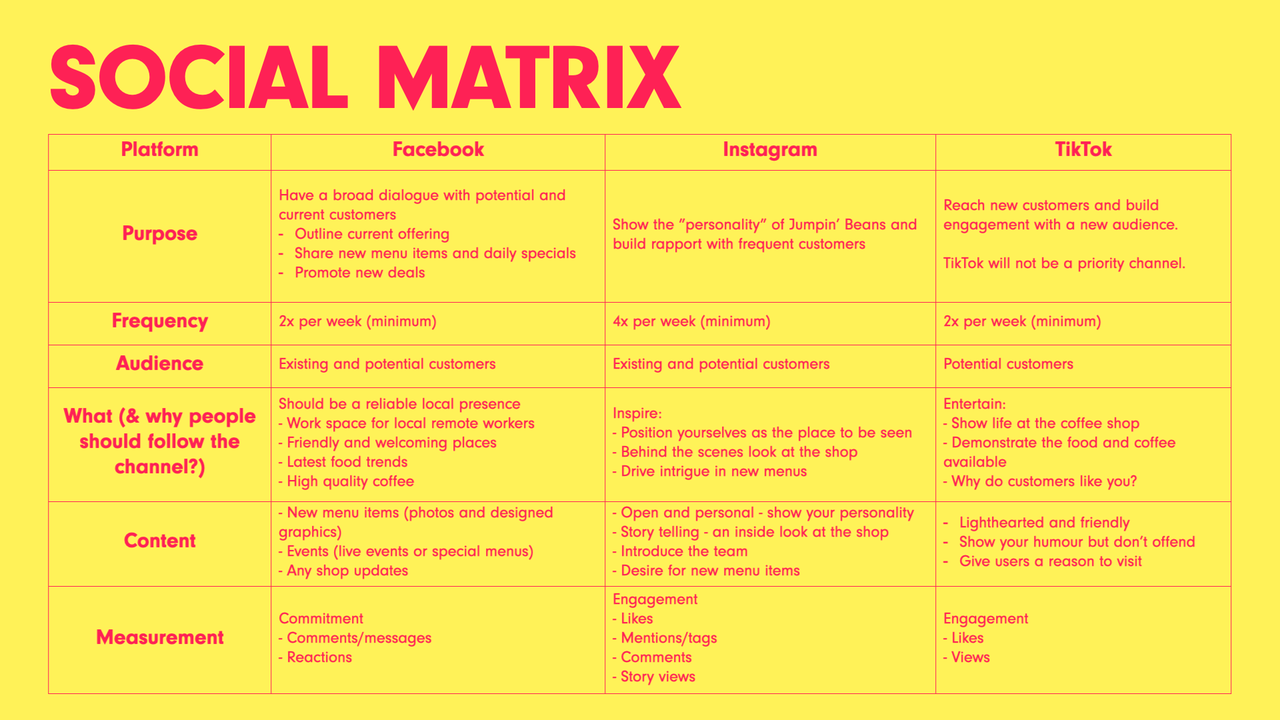UGC will be the Queen (or King) of social in 2024

In the sparkling world of social media, one trend is set to dominate in 2024 - user-generated conte…

Your Facebook account is up and running, you’ve created the perfect hashtag for your brand and you’ve designed a slick set of Instagram stories but, as a business, do you know why you’re even posting on all these different channels?
If the answer isn’t crystal clear then you need a social media strategy.
A straightforward social media strategy can ensure that everyone is involved working towards the same goal. If you’re going to invest time and money into creating social media content, then you need to make sure you understand why you’re posting and how to measure the return.
No business should spend money on marketing activity without being sure that the activity will take them closer to their business goals. The same rule applies to social media.
You can start creating your social media strategy by asking a few simple questions:
Before a brand starts posting on social media, they need to determine why they’re on social media and what they want to achieve - you wouldn’t start a journey without knowing your destination. Your social media goals should align with your overall business objectives - a few examples could be:
Once you know what you want to achieve you can determine what you need to do to drive results.
So, the first thing any brand needs to do is collect some data to figure out where their customers are on social media. There’s a wide range of social media platforms out there, so how do you figure out which ones to use?
Once you have all of this data, you can determine where your customers are online and which platforms are a priority for them.
Once a brand knows what they’re looking to achieve and the platforms it’ll be posting on, it can begin to determine the type of content they need. You need to strike a balance between what audiences want to see and the content that supports your objectives.
Let's take a look at a few types of content and how they can support your activity:
You also need to determine the type of content that works for each platform. Too many brands fall into the trap of simply posting the same thing across each platform and becoming frustrated when they don’t see the return they want.
Now you’ve determined where you’re posting, who you’re talking to, and the content you’re creating, you need to knit all of that together to determine an overarching plan to drive consistent results.
This should be a clear road map that provides direction for all those involved with social media. Here is an extraction from an example strategy we created for a company called Jumpin' Beans, which demonstrates the kind of snapshot you can build:

People get excited about new followers and a high number of likes, but those figures are only exciting if these metrics lead to you reaching your objectives. Brands need to identify the metrics that demonstrate their goals.
Once you’ve determined the metrics that you are tracking, you’ll need to review the figures on a regular basis to ensure you’re moving in the right direction. We’d advise that you review these figures on a monthly basis and identify the content that drives results and the content that doesn’t. Tweak your plan, then rinse and repeat.
We’ve managed to create a pretty straightforward example and display it in a few nice neat boxes. However, it’s important to understand the challenges that could be unique to your brand or industry. For example:
All of these factors can be built into your social media strategy to ensure you have a plan to reach your goals.
Further to this, it’s important to understand that any strategy is never truly finished. Even in the case of our example, they need to make sure they are consistently reviewing their goals, their audience, and the results they are seeing. It’s essential that any business is constantly adapting and your social media strategy should be no different.
Lastly, you need to be ready for social platforms to adapt and change. New features are always being released and new trends are appearing on a daily basis, and while every update may not resonate with your audience specifically, you need to be ready to spot emerging opportunities.
I hope this explained a little about how a social media strategy can help you and your business succeed on social media. It comes down to the golden rule of ‘work smarter, not harder’. Taking the time to understand your audience, and the content that will resonate with them, is an essential step to success on social media.
We’ve got experience with helping brands break down their complex customer relationships into a straightforward social media strategy that can be implemented almost immediately. Our expert user researchers can use interviews and other methodologies to gain a deep insight into how your customers think, and we can help you identify who your customers are and what they need to ensure you’re in the right place at the right time.
If you’d like to discuss how we can help you discover your audience or develop a bespoke social media strategy then get in touch with our friendly team.
Looking for some inspiration? You can download our example strategy for Jumpin' Beans by clicking the link below.
We've created a social media strategy for everyone's (fake) local coffee shop, Jumpin' Beans.
Download